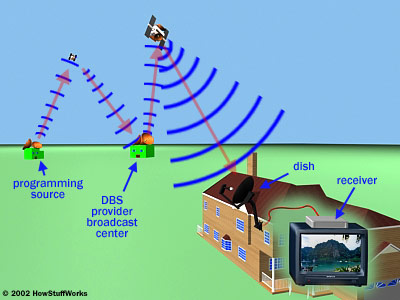Since its infant stages in the 90s, satellite television has remained one of the best ways to watch television. I personally know a lot of guys who spent a lot of time and money into getting their own satellite dish back in the day. And these things were huge – they were the dinosaurs of TV tech. Older satellite models would eat up a huge chunk of your yard back then.
Nowadays we’ve got high-tech looking satellite dishes that are tiny enough to prop up roofs and posts and such. These things are so convenient that they’re the subscription of choice for most TV buffs, especially in the more rural areas where cable companies are pretty scarce, but how exactly do these babies work? Let’s have a look-see, shall we?
- Programming Source
These are the networks that distribute the programs to be broadcast. These sources send the signals over to the broadcasting center who subscribe to their programs.
- Broadcasting Station
These are the satellite TV service providers that you subscribe to. They receive the signals from the programming sources and beam them out to satellites positioned in orbit.
- Orbiting Satellites
These are satellites orbiting the earth positioned to receive the signals beamed from the broadcast station and distributes them towards satellite dishes on earth
- Satellite Dishes
The satellite dishes handed out by your satellite TV company (tied to those broadcast stations mentioned earlier) then receive the signals and relays it onto the receivers connected to your TV.
- Receivers
These are responsible for taking the signals and converting them into data for your TV sets for you to watch.










